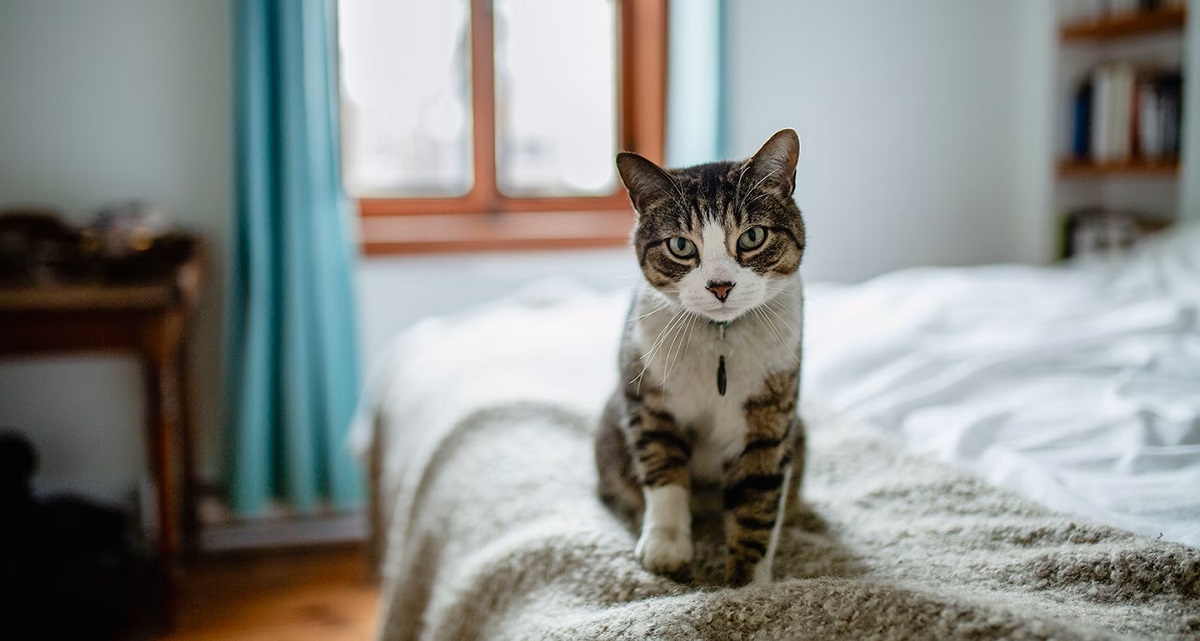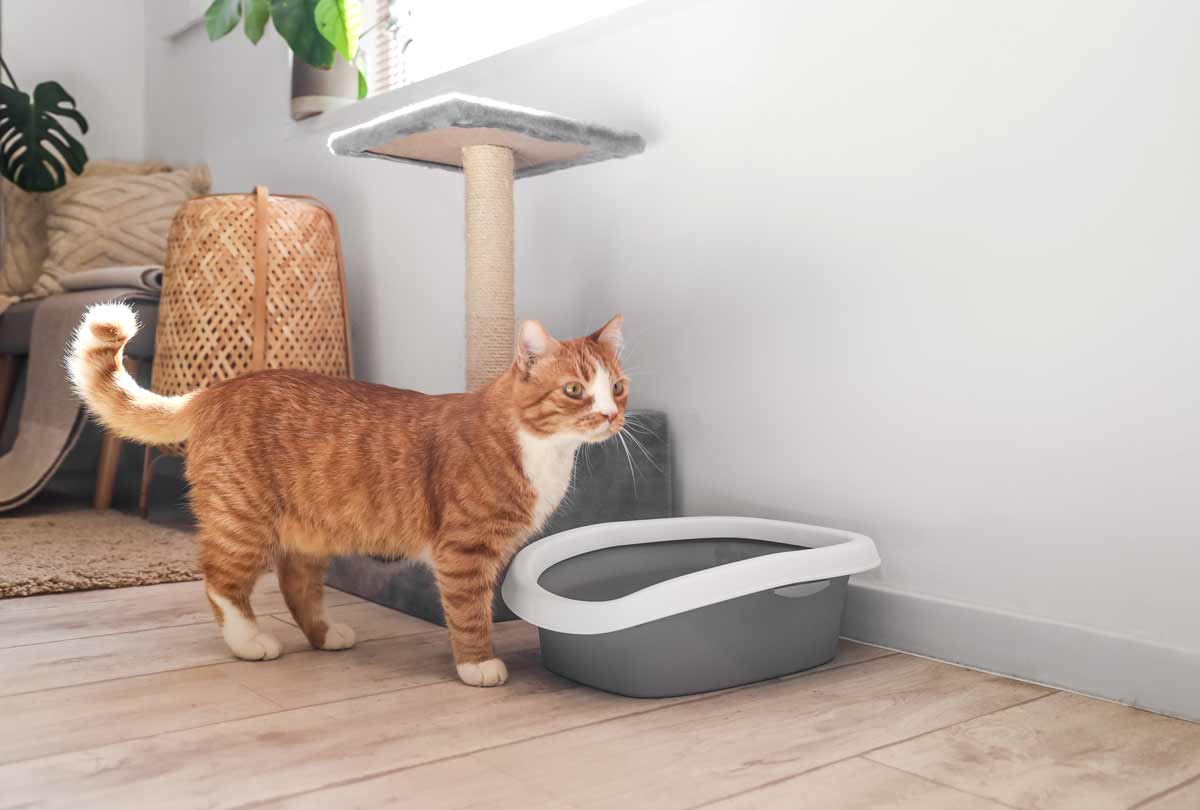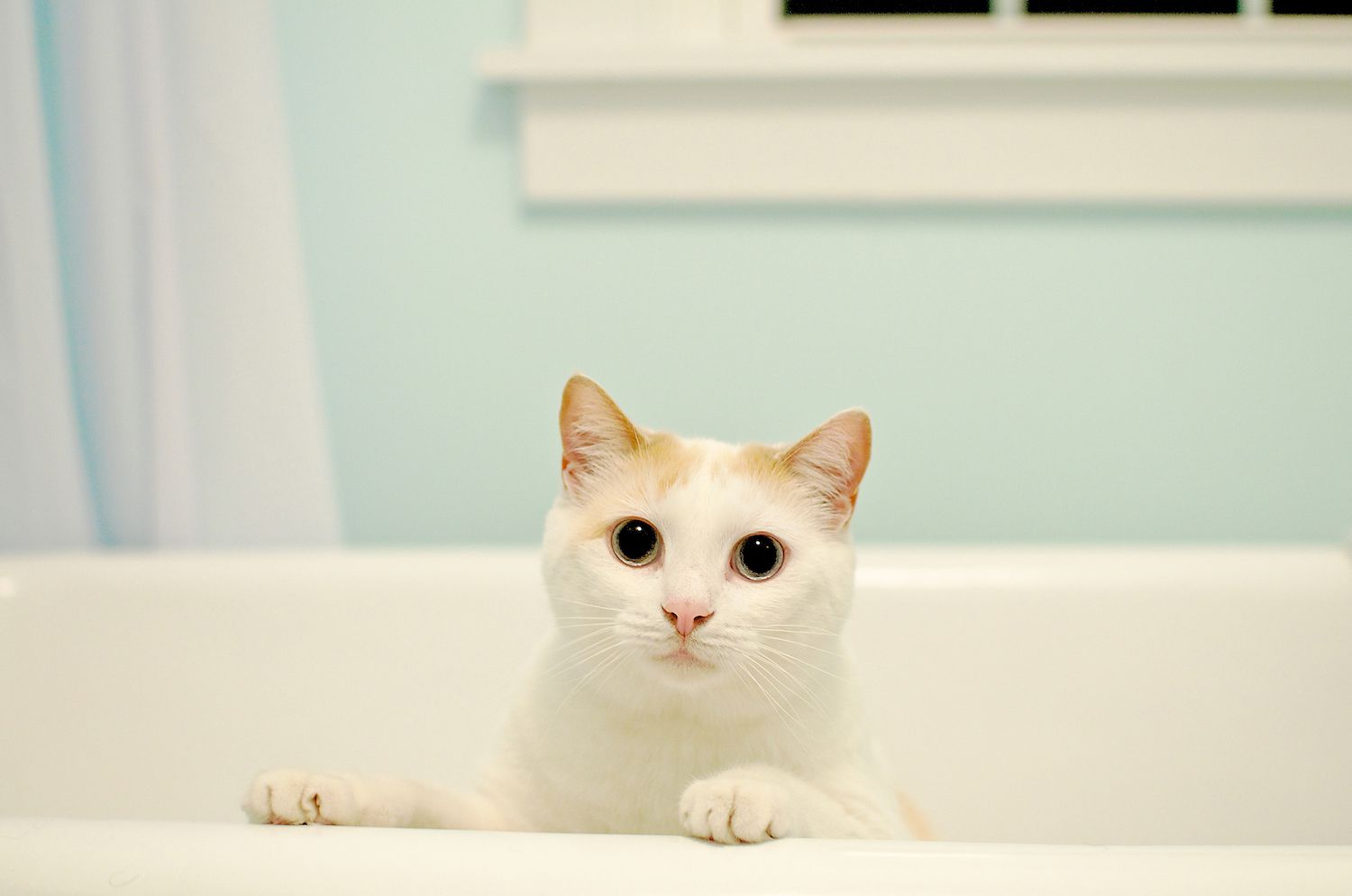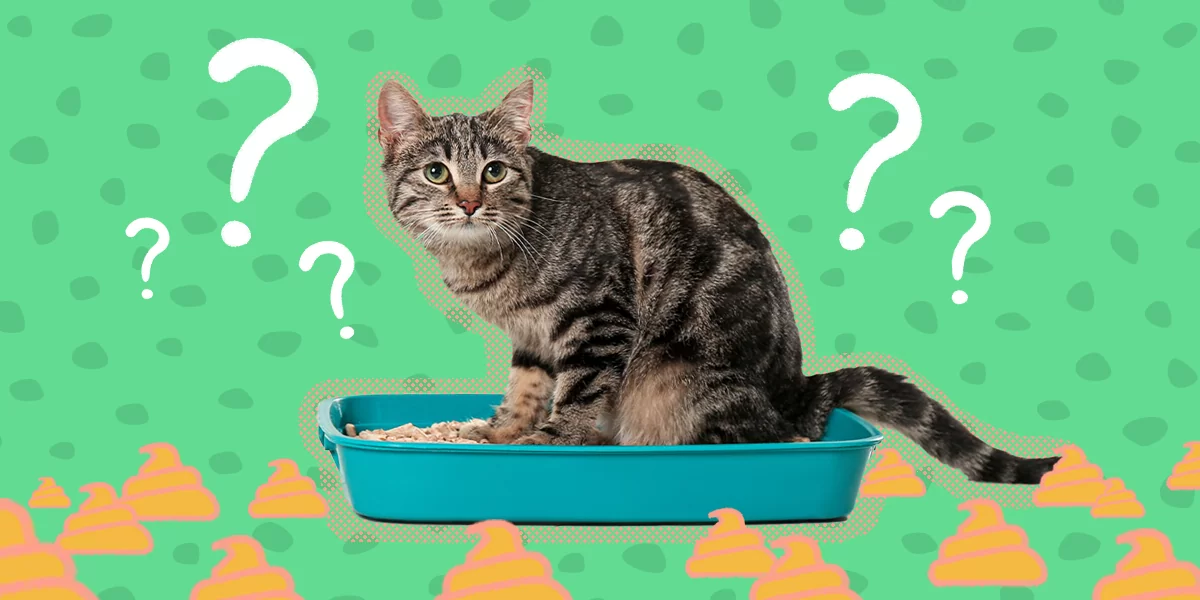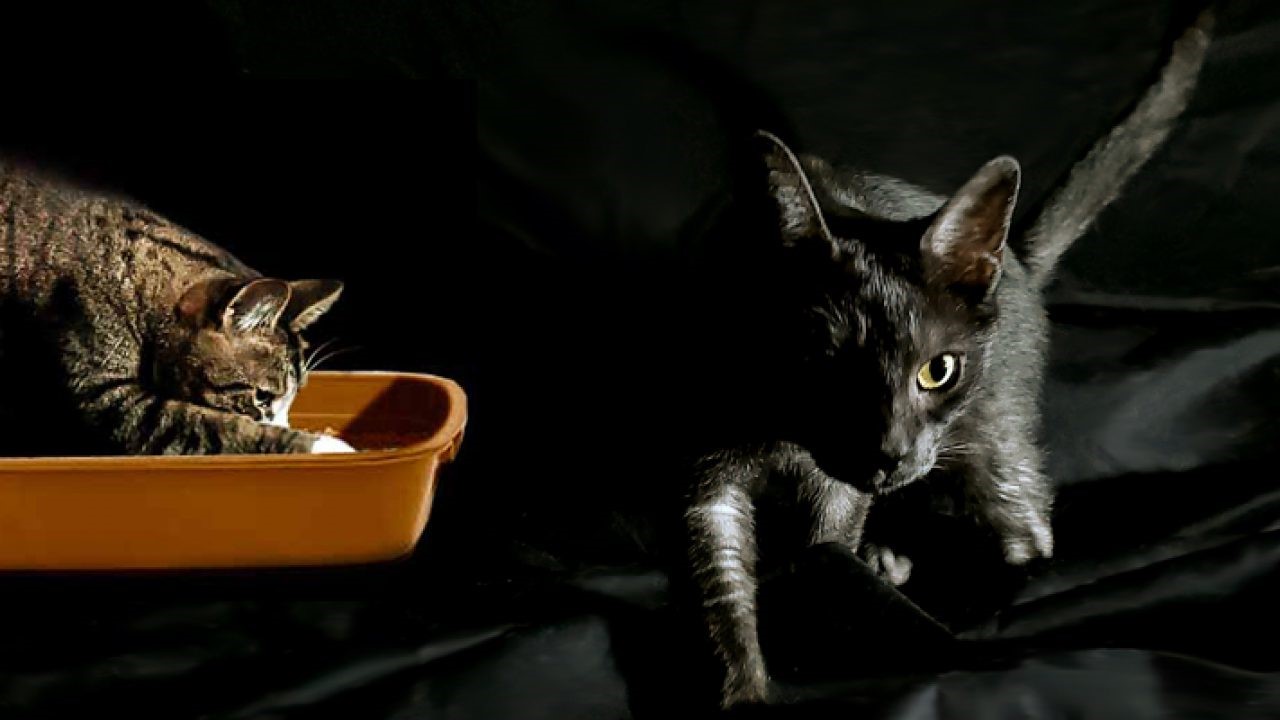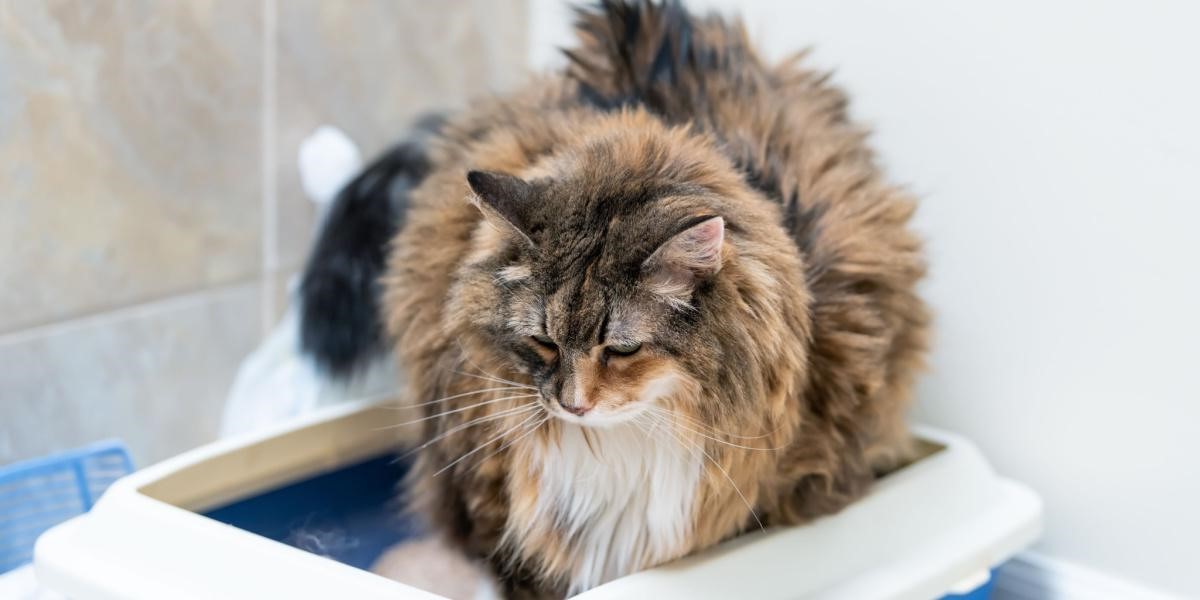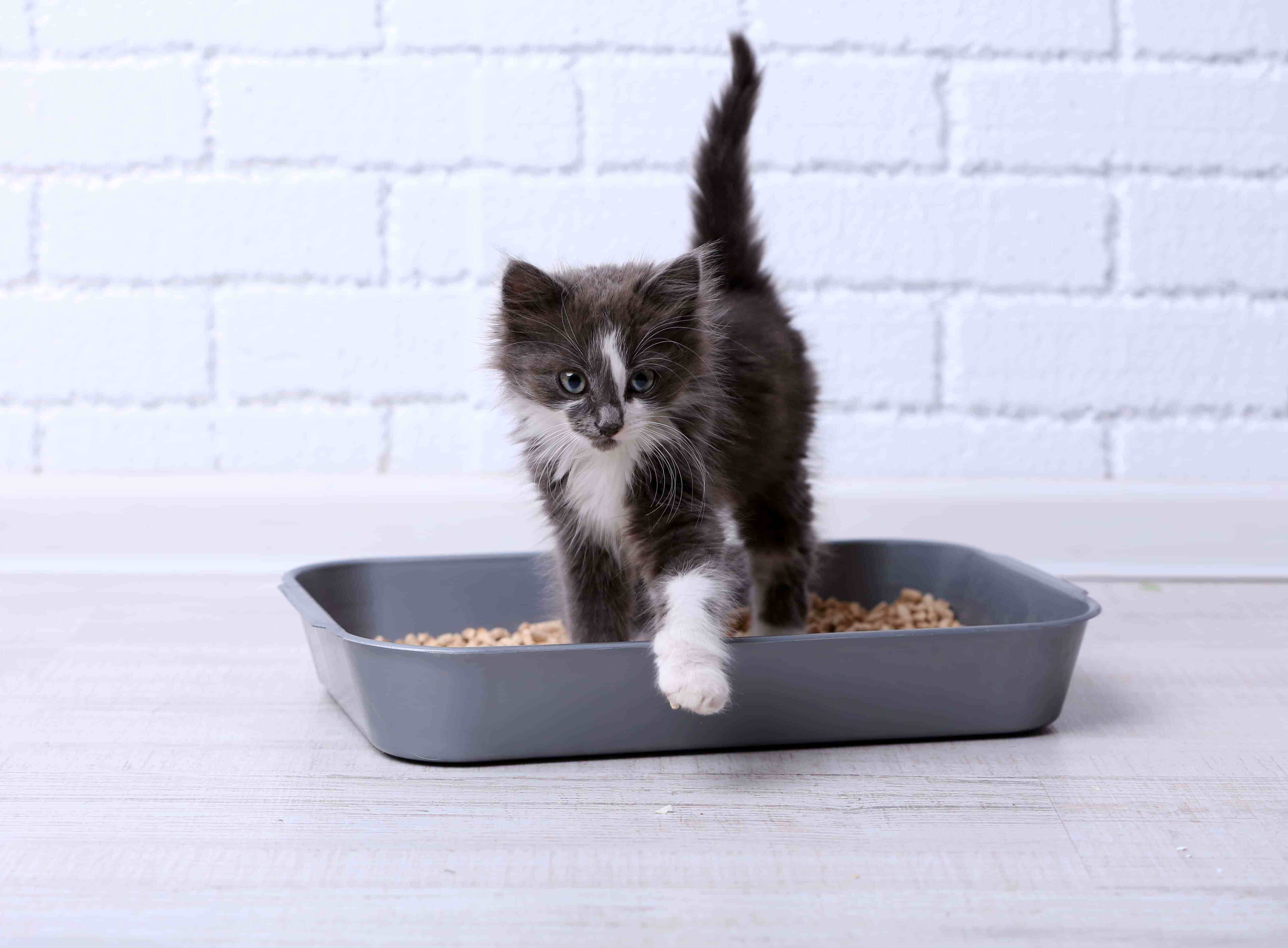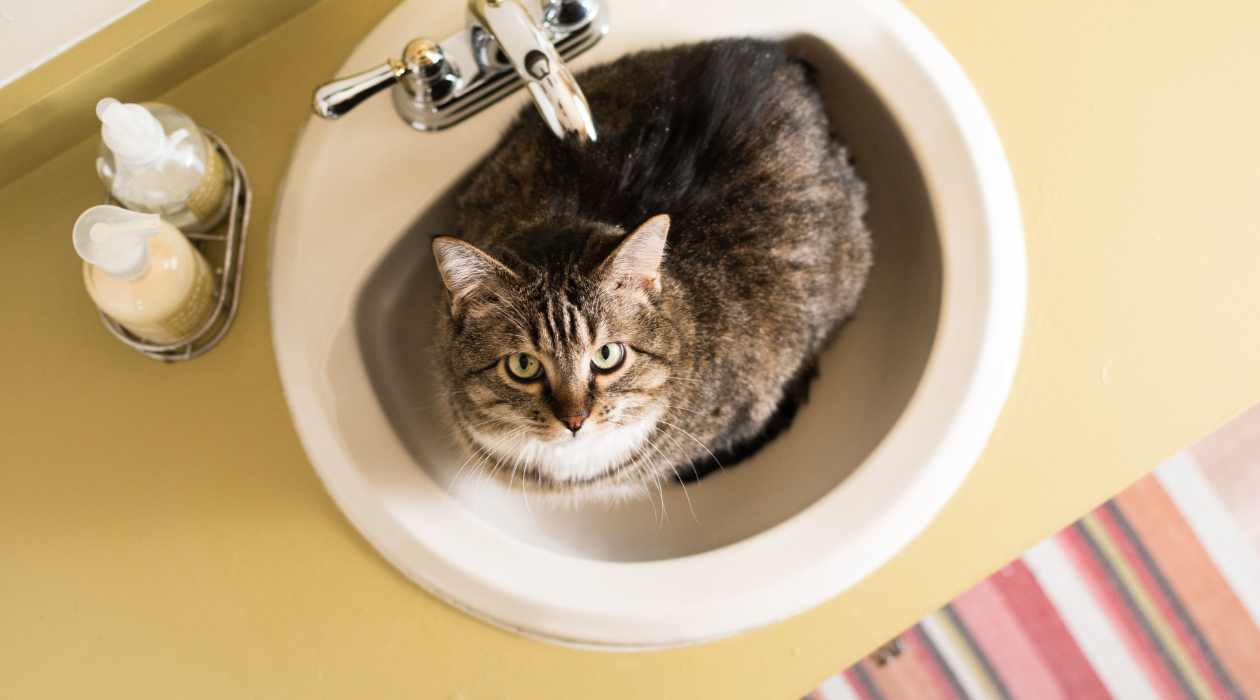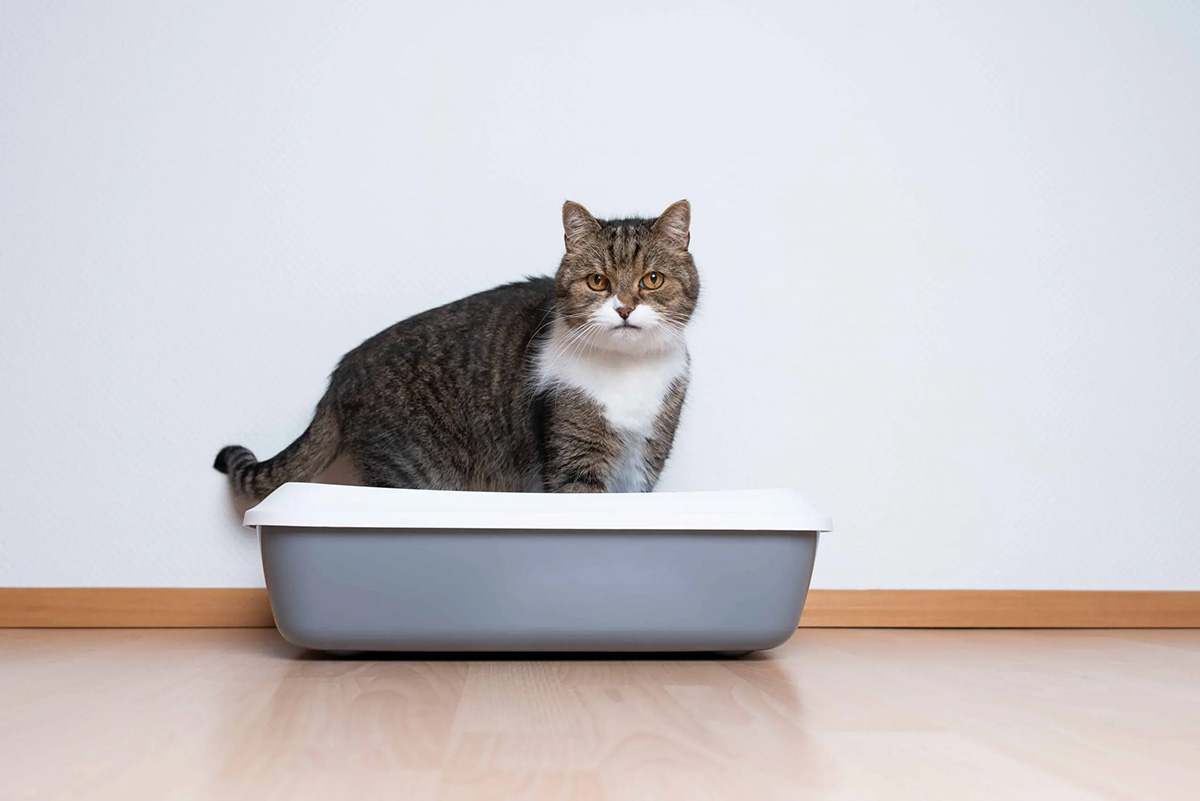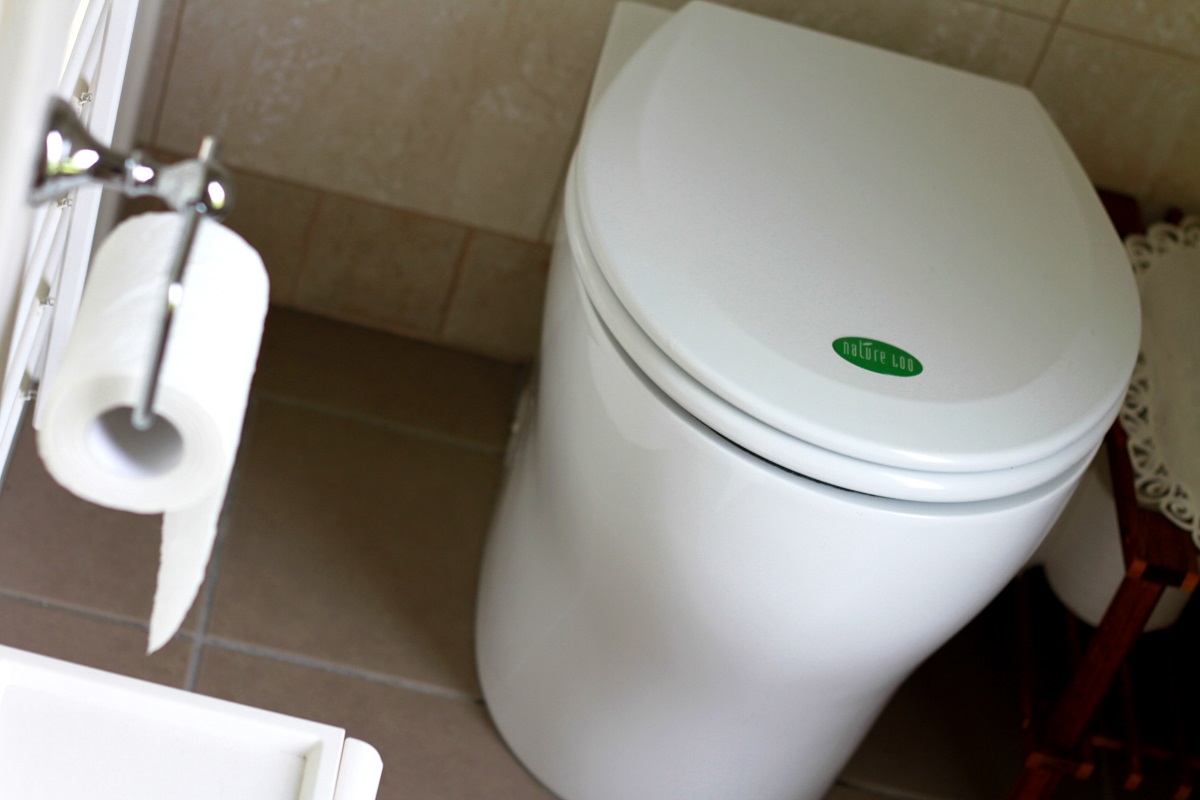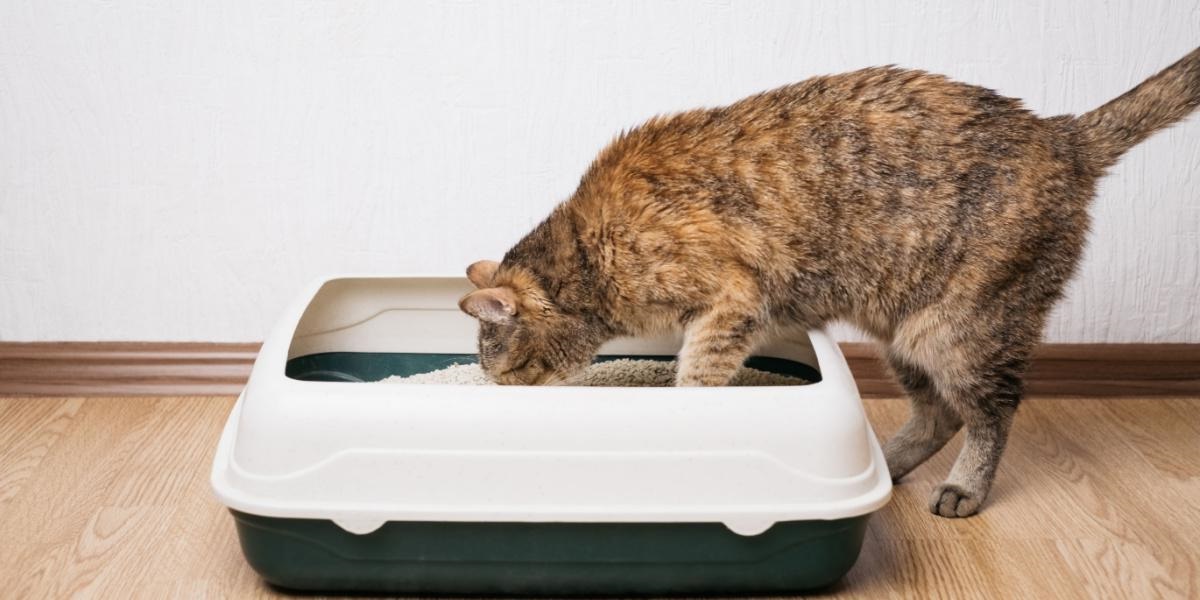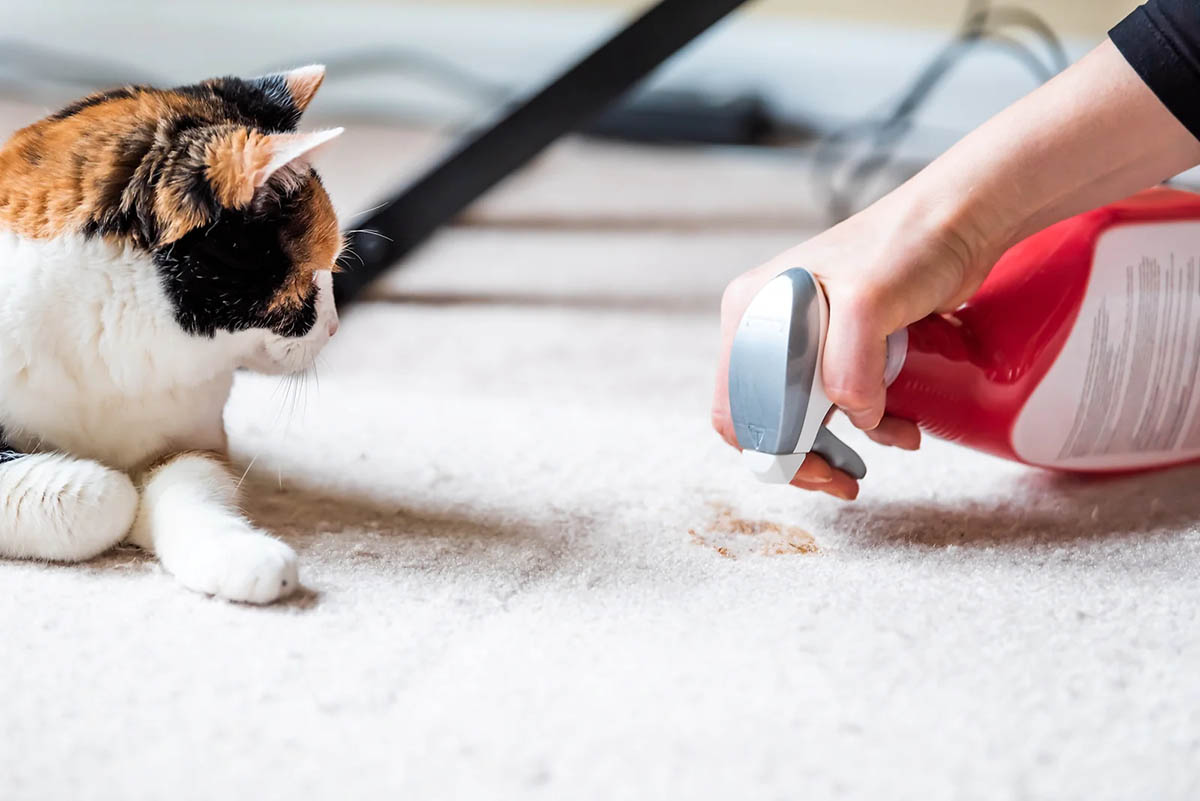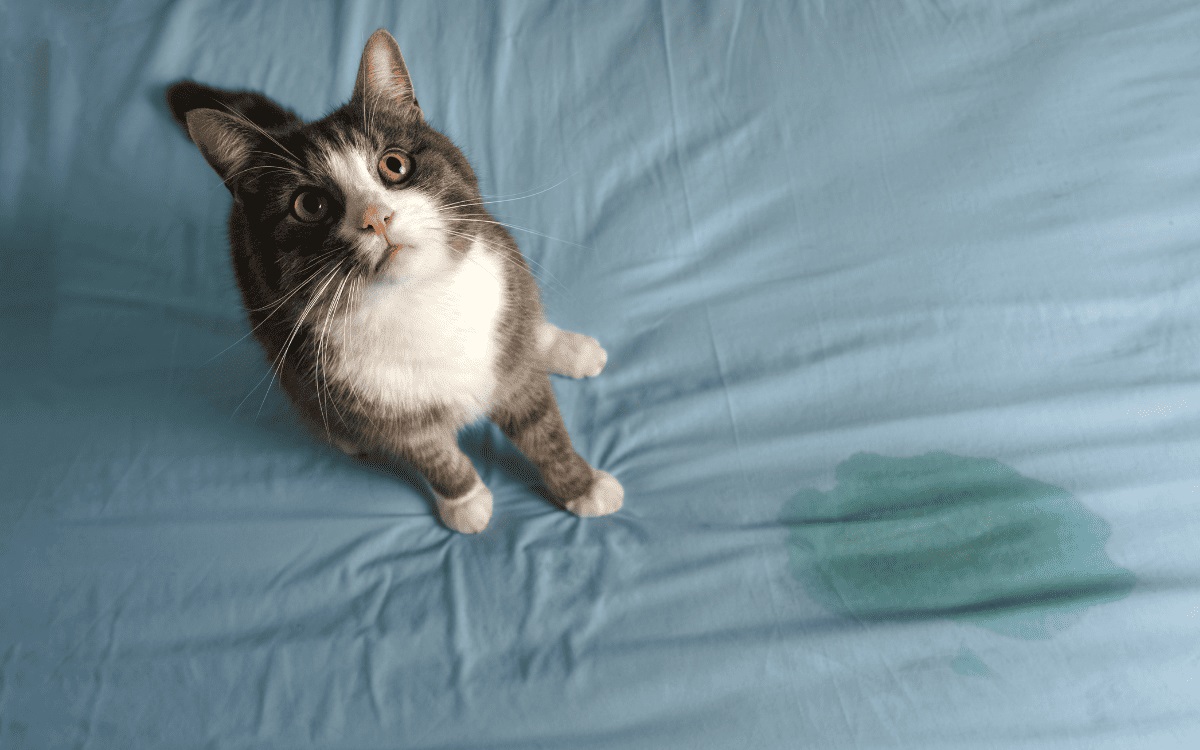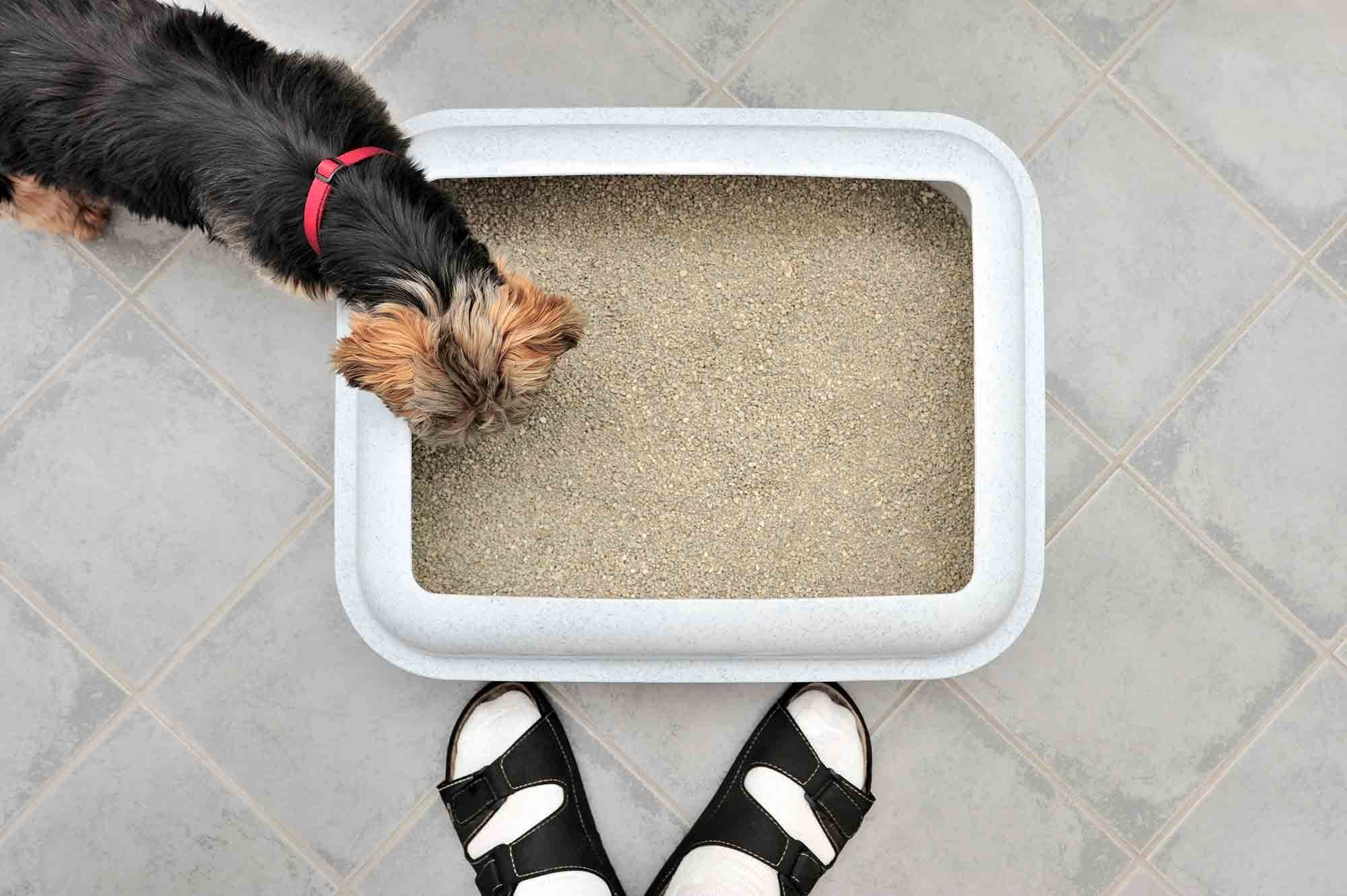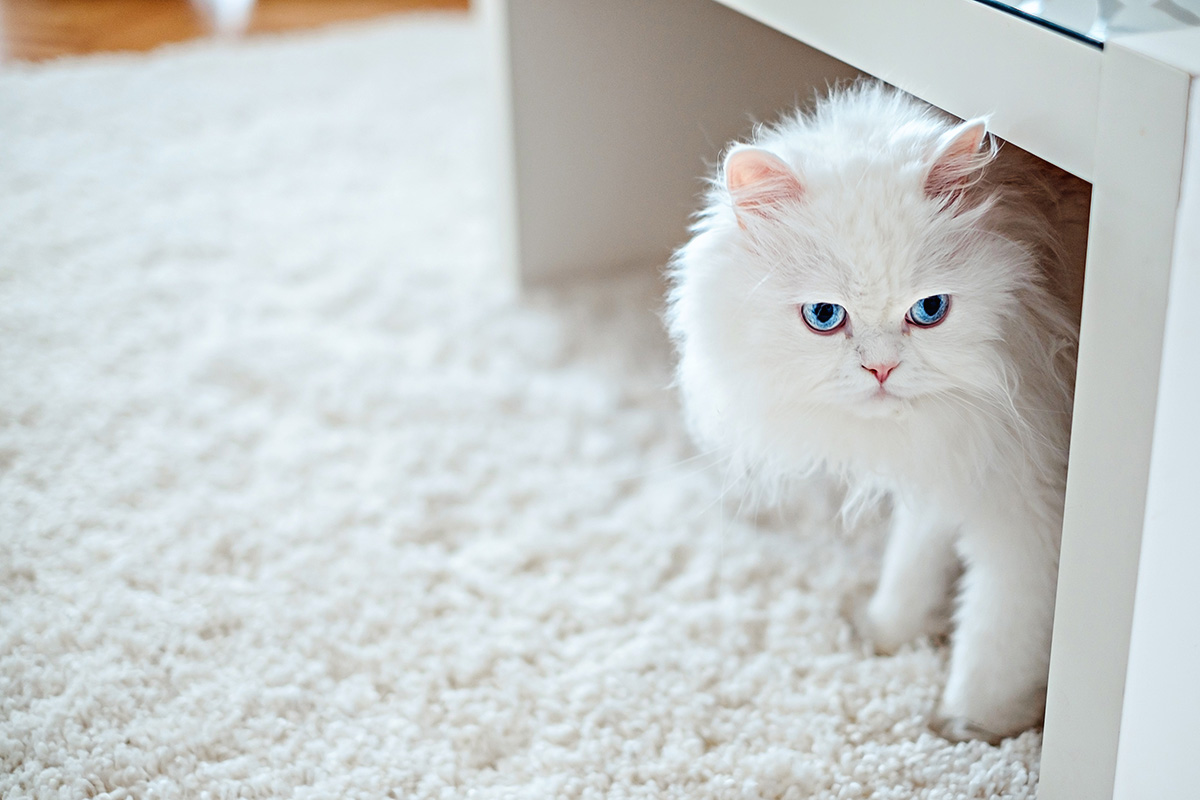

Articles
Why Does My Cat Keep Pooping On The Carpet
Modified: March 2, 2024
Discover articles about why cats may have a tendency to poop on the carpet and how to address this common issue. Explore solutions and expert advice.
(Many of the links in this article redirect to a specific reviewed product. Your purchase of these products through affiliate links helps to generate commission for Storables.com, at no extra cost. Learn more)
Introduction
Welcome to the world of cat ownership! Cats can bring immense joy, companionship, and entertainment into our lives. However, sometimes they exhibit behaviors that leave us scratching our heads, such as pooping on the carpet. If you’ve found yourself wondering, “Why does my cat keep pooping on the carpet?” you’re not alone.
This article aims to provide insight into the possible reasons behind this behavior and offer solutions to address the issue. By understanding your cat’s behavior and taking appropriate steps, you can help create an environment where your furry friend feels comfortable, secure, and inclined to use the litter box.
It’s important to note that cats are fastidious creatures with strong instincts for cleanliness. They typically prefer to eliminate in a designated area, such as a litter box or a designated outdoor spot. If your cat suddenly starts pooping on the carpet, it may indicate an underlying issue that needs attention.
Solving this problem requires a combination of understanding your cat’s behavior, ruling out any medical conditions, making environmental adjustments, and reinforcing positive behaviors. Let’s dig deeper into each aspect to get a better grasp of why your cat may be pooping on the carpet and how you can address it.
Key Takeaways:
- Understanding your cat’s behavior and addressing potential medical issues and environmental enrichment are crucial in preventing your cat from pooping on the carpet.
- Reinforcing positive behavior through positive reinforcement techniques and avoiding punishment can guide your cat towards consistent litter box usage.
Read more: Why Does My Cat Poop In My Bathtub?
Understanding the Behavior: Possible Reasons for Pooping on the Carpet – Communication through Elimination – Indoor Litter Box vs. Outdoor Options
When your cat starts pooping on the carpet, it’s essential to delve into the possible reasons behind this behavior. Cats use elimination as a form of communication, and there can be several factors influencing their choice of location.
One reason could be an issue with the litter box itself. Cats are inherently clean animals and have specific preferences when it comes to their elimination habits. If the litter box is not cleaned regularly or doesn’t meet your cat’s standards of cleanliness, they may seek an alternative spot, such as the carpet, to do their business.
Another consideration is the placement of the litter box. Cats prefer privacy when using the litter box, so if it’s located in a busy or high-traffic area, they may try to find a more secluded spot. Additionally, if the litter box is difficult to access or located too far away, your cat may opt for a more convenient alternative.
Indoor cats may also have an instinctual desire to eliminate outdoors. The smells, textures, and surfaces found in nature can be appealing to them. If your cat is unable to go outside, they may seek similar experiences on soft surfaces like carpets to satisfy this innate desire.
It’s important to note that pooping on the carpet can also be a sign of a medical issue. Urinary tract infections, gastrointestinal problems, or other health conditions can cause discomfort and lead to changes in elimination behavior. If you notice any additional symptoms such as blood in the stool, frequent urination, or lethargy, it’s crucial to consult a veterinarian to rule out any underlying medical concerns.
Understanding the reasons behind your cat’s behavior is the first step towards finding a solution. In the next sections, we’ll explore ways to address both behavioral and potential medical factors that contribute to your cat pooping on the carpet.
Potential Medical Issues: Common Health Problems – How to Identify Medical Issues – Consulting a Veterinarian
If your cat is consistently pooping on the carpet, it’s essential to consider potential medical issues as a possible cause for this behavior. Cats are masters at hiding their discomfort, so it’s crucial to be vigilant and observant of any changes in their behavior or health.
There are several common health problems that can lead to changes in litter box behavior. One of the most common is urinary tract infections (UTIs). UTIs can cause pain and discomfort during urination, leading your cat to associate the litter box with discomfort. As a result, they may choose to eliminate on the carpet instead.
Gastrointestinal issues such as diarrhea or constipation can also contribute to inappropriate elimination. Cats experiencing digestive problems may develop an aversion to using the litter box due to the association of pain or discomfort.
If you suspect a medical issue, it’s important to closely monitor your cat’s behavior. Look out for signs such as frequent urination or straining in the litter box, changes in appetite or water intake, lethargy, or vomiting.
Consulting a veterinarian is crucial to properly identify and address any medical issues your cat may be experiencing. A thorough physical examination and potentially additional tests, such as urine or blood tests, can help pinpoint the underlying cause of the behavior. Once a diagnosis is made, your veterinarian can provide appropriate treatment options.
Remember, it’s always better to be safe than sorry when it comes to your cat’s health. If you suspect a medical issue, don’t hesitate to reach out to your veterinarian for guidance and support.
Addressing Behavioral Factors: Ensuring Cleanliness of the Litter Box – Proper Litter Box Placement – Providing Adequate Litter Box Options
When it comes to addressing the behavioral factors that contribute to your cat pooping on the carpet, focusing on the litter box is paramount. Cats are sticklers for cleanliness and have specific preferences when it comes to their elimination habits.
One crucial aspect to consider is the cleanliness of the litter box. Cats prefer a clean and odor-free environment for their elimination needs. Make sure to scoop the litter box at least once a day and replace the litter regularly. This will not only keep it more appealing for your cat but also minimize any smells that might deter them from using it.
In addition to cleanliness, the placement of the litter box plays a significant role in encouraging appropriate elimination. Cats prefer privacy and quiet when using the litter box, so it’s essential to choose a quiet and low-traffic area of your home. Avoid placing it near loud appliances or in areas where there is a lot of foot traffic that can disturb your cat’s privacy.
Providing multiple litter box options is another strategy that can help address behavioral issues. Cats may have preferences for different types of litter or litter box designs, so offering a variety of choices can increase the likelihood of them using the litter box correctly. Different sizes and shapes of litter boxes can also cater to your cat’s individual preferences.
It’s worth experimenting with different types of litter as well. Some cats prefer clumping litter, while others may prefer non-clumping or natural litter options. By observing your cat’s behaviors and preferences, you can find a litter that they are comfortable using.
Remember, changes to litter box habits won’t happen overnight. Be patient and consistent in implementing these behavioral adjustments. By ensuring the cleanliness of the litter box, providing proper placement, and offering adequate litter box options, you can encourage your cat to use the litter box consistently and reduce the likelihood of them pooping on the carpet.
Ensure your cat’s litter box is clean and easily accessible. Cats may avoid using the litter box if it’s dirty or in a hard-to-reach area. Also, consider any changes in their environment or diet that may be causing stress or digestive issues.
Environmental Enrichment: Mental Stimulation and Playtime – Providing Scratching Posts – Creating a Safe and Comfortable Environment
Environmental enrichment plays a crucial role in addressing behavioral issues and preventing your cat from pooping on the carpet. Cats are intelligent and curious creatures who thrive in environments that provide mental stimulation and opportunities for physical activity.
Mental stimulation and playtime are essential for keeping your cat engaged and content. Interactive toys, puzzle feeders, and play sessions can help alleviate boredom and stress, which can contribute to inappropriate elimination. Spend quality time with your cat each day, engaging in activities that encourage exercise and mental engagement.
Another important aspect of environmental enrichment is providing appropriate outlets for natural behaviors. Cats have a natural instinct to scratch, and providing them with scratching posts can help redirect their behavior away from the carpet. Scratching posts should be tall, sturdy, and positioned strategically throughout your home to give your cat options for scratching.
Creating a safe and comfortable environment is also crucial in preventing your cat from seeking alternative elimination spots. Ensure that your home is free from potential stressors, such as loud noises or conflict with other pets. Providing hiding spots, comfortable bedding, and vertical spaces, such as cat trees or shelves, can also help create a sense of security and territory for your cat.
Additionally, it’s important to provide a quiet and peaceful area where your cat can retreat to when they need some alone time. This can be a separate room or a designated cozy corner with a soft bed and some toys.
By addressing your cat’s environmental needs and providing mental stimulation, opportunities for physical activity, appropriate scratching options, and a safe and comfortable space, you can help redirect their behavior away from the carpet and towards more appropriate elimination areas.
Reinforcing Positive Behavior: Using Positive Reinforcement Techniques – Avoiding Punishment – Rewarding Appropriate Elimination
Reinforcing positive behavior is key to preventing your cat from pooping on the carpet and encouraging them to use the litter box consistently. Positive reinforcement helps create a positive association with appropriate elimination behaviors and can be more effective than punishment in changing your cat’s behavior.
Using positive reinforcement techniques involves rewarding your cat for using the litter box correctly. Whenever you catch your cat using the litter box, praise them verbally and offer a small treat or a favorite toy as a reward. This positive reinforcement helps reinforce the connection between good behavior and rewards, making them more likely to repeat the behavior.
Avoiding punishment is crucial when addressing litter box issues. Cats do not respond well to punishment, and it can actually make the problem worse. Punishing your cat for pooping on the carpet can lead to fear, stress, and anxiety, which may further contribute to inappropriate elimination behaviors.
Instead, focus on rewarding and reinforcing appropriate elimination behaviors. By redirecting their attention to the desired behavior and providing positive reinforcement, you can create a more positive and supportive environment for your cat.
Consistency is key when it comes to positive reinforcement. Be patient and persistent in reinforcing the desired behavior. Over time, your cat will start to associate the litter box with positive experiences and will be more likely to use it consistently.
In addition to verbal praise and treats, you can also consider utilizing pheromone sprays or diffusers, specifically designed to reduce stress and promote a sense of comfort for cats. These products release synthetic pheromones that mimic the natural calming scents produced by cats, helping to create a soothing environment.
Remember, every cat is unique, and it may take some trial and error to find the most effective positive reinforcement techniques for your furry friend. By rewarding and reinforcing appropriate elimination behaviors, you can encourage your cat to choose the litter box over the carpet.
Conclusion
Dealing with a cat that keeps pooping on the carpet can be frustrating, but understanding the underlying reasons and implementing the appropriate solutions can help alleviate the issue. By addressing both behavioral and potential medical factors, creating an enriching environment, and reinforcing positive behavior, you can help guide your cat towards consistent litter box usage.
Start by understanding the possible reasons for your cat’s behavior, such as issues with the litter box cleanliness or placement, and their natural instincts for outdoor elimination. Address behavioral factors by ensuring the litter box is clean, properly placed, and providing multiple litter box options. Consider any potential medical issues and consult a veterinarian if necessary.
Environmental enrichment is essential for your cat’s overall well-being. Engage in regular playtime, provide scratching posts, and create a safe and comfortable environment for them to thrive. By stimulating their mind and providing outlets for their natural behaviors, you can help reduce stress and prevent inappropriate elimination.
Reinforcing positive behavior is crucial in guiding your cat towards appropriate litter box usage. Use positive reinforcement techniques, reward your cat for using the litter box correctly, and avoid punishment, as it can lead to more stress and behavioral issues.
Remember, each cat is unique, and it may take time and patience to find the right solutions that work for your furry friend. Implementing a combination of these strategies and being consistent with your approach will increase the likelihood of success.
If the problem persists or if you’re unsure about the underlying causes, it’s always best to consult with a veterinarian or seek advice from a professional feline behaviorist who can provide personalized guidance and support.
In conclusion, understanding your cat’s behavior, addressing any potential medical issues, providing environmental enrichment, and reinforcing positive behavior are key steps in resolving the issue of your cat pooping on the carpet. With dedication and a supportive approach, you can create a harmonious environment where your cat feels comfortable and confident in using the litter box consistently.
Frequently Asked Questions about Why Does My Cat Keep Pooping On The Carpet
Was this page helpful?
At Storables.com, we guarantee accurate and reliable information. Our content, validated by Expert Board Contributors, is crafted following stringent Editorial Policies. We're committed to providing you with well-researched, expert-backed insights for all your informational needs.
